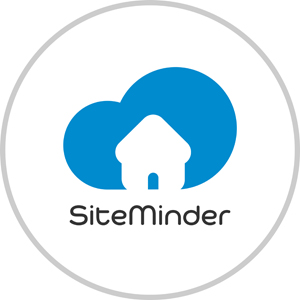
By Fig Cakar, Managing Director – the Americas, SiteMinder
Like Google, OTAs have their own algorithms to determine how hotels rank on their website. I would know; I worked at one for many years.
And, while I (or anyone else) could never profess to understand the complete math behind hotel rankings on OTAs, it should come as no surprise that hotels that generate larger revenue for OTAs will almost always earn themselves a higher spot. After all, if an OTA is a million-dollar account for you, then you are a million-dollar account to them, too.
For independent hotels, it’s quite the chicken-and-egg conundrum, though, isn’t it? Of course, you want to prove your monetary worth, but if your ranking is abysmal, that only leads to zero visibility of your hotel property. No visibility means no bookings. And, no bookings means no revenue, which means a hotel that is challenged to inch its way up the ranks.
It’s a vicious cycle, and it begs the question: How do you, as an independent hotel, compete with this?
The answer may not be pleasing to all hoteliers, but it’s a strategy I’ve seen work to incredible effect over the years.
Work with your OTA partner, not against them.
The reasons are simple:
- According to Kalibri Labs’ Demystifying the Digital Marketplace report, OTAs are gaining – not losing – market share. And, between 2011 and 2015, commissions paid to third parties rose twice the rate of room revenue growth.
- With an optimized OTA profile, your hotel stands to gain not only bookings from the third-party channel but from your direct hotel website, helping you to offset the commission fee you pay to the OTA. (Yes, the Billboard Effect is real.)
- A diversified distribution strategy that incorporates both direct and third-party channels is crucial for the success of any hotel business today. The ‘necessary evil’ of paying commission fees can be a small price to pay in exchange for the visibility gained through OTAs. As one hotelier told SiteMinder through the Global Hotel Business Index released earlier this year: “Competing hotels entering the market in any market is very difficult. Online presence and attractiveness rank very high on every hotel's list.”
Lastly, and as importantly… OTAs need you. Just as you have your revenue targets to hit, so, too, do an OTA’s market managers, which means it is in their best interests to help drive your success. Too many hoteliers forget this and ultimately disadvantage themselves when it comes to distributing and selling their perishable rooms.
The underlying message? If you are an independent hotel, your key strategy should be convincing an OTA you can provide them a higher return on investment (ROI).
Optimize for the best results
To get the full benefit of OTAs and their reach, here are nine proven ways you can optimize your hotel’s profile:
- Know your market managers Build a relationship with them as you would any other business partner. OTAs offer tremendous value, so it’s wise to use your market manager and get the best value through them.
- Recognize the OTA is a marketing and sales channel for your hotel Like any brand, your hotel’s marketing and sales efforts should be consistent across all your selected channels. As with your availability, don’t save your best images and content just for your direct website; make sure they’re on your OTA listings, too. Compliment high resolution images with detailed room descriptions to showcase the best your hotel has to offer. And, be sure to provide as much detail on your cancellation and check-in policies. Research shows fewer travellers will book when these details are missing.
- Offer the same availability as you would your hotel website or any other channel Do you currently provide the same availability to ALL your selected OTAs, or is it a guessing game as to which will fill your rooms first? Availability is crucial and because it will fluctuate, particularly during peak or seasonal periods, you need to make sure it is equal and accurate across all your OTAs – always. Using a channel manager that updates OTAs in real-time and has pooled inventory functionality is the best way to achieve this and ensure travellers aren’t disrupted by double bookings or incorrect data. This way, you can achieve higher conversions and keep your rate of occupancy high.
- Cleverly manage your rates and promotions Guests don’t simply use OTAs for a wide range of choice and inspiration; often they’re looking for last minute deals and offers. If you have time-sensitive promotions they’ll have a greater chance of being taken up and you can more easily sell your distressed inventory. Make alterations on your OTA profiles to highlight a particular rate or capitalize on seasonal events to attract and convert more guests.
- Carefully respond to guest reviews While only 14% of consumers trust traditional advertising, 92% respect reviews on sites such as TripAdvisor. Reviews on OTAs are traditionally reliable because guests can only post a review after they’ve stayed at the property. However, only 36% of hoteliers respond to reviews on OTA sites. It’s important to do an efficient job of managing online reviews, and recognizing the essential role they play in both your guests’ post-stay experience and in influencing the perception of other potential guests. Capitalize on the ability to reach consumers directly.
- Consider paid advertising This option isn’t restricted to large hotel corporations. It can also be a viable option for independent hotels on a pay-per-click basis. While paid advertising is no guarantee of more bookings, it will make your property more impressionable and provide you more control over your marketing message. If your content and aesthetic is strong, you should see a rise in revenue and your OTA ranking.
- Focus on specific markets Narrowing down your targets will mean you impact a lower volume of customers but you’re also more likely to secure the bookings you want if you use certain time periods, events or other methods to target specific audiences. For example, you can employ geo-targeting so only Chinese travellers see a particular promotion.
- Understand your competition It’s vital to know your local competition so you aren’t significantly underselling or overselling your rooms. If you are, you won’t be able to compete. Being aware of their activity may also provide an opportunity to snare extra bookings. For example, changing rates could indicate the occupancy of a competitor or a promotion based on something you could also benefit from. There are specific market intelligence systems hotels can use to monitor competitors.
- Consider entering into a preferred partner agreement Through a preferred partner agreement, an OTA will rank your hotel higher in return for a larger commission. I’m sure the thought of paying more commissions is the furthest thing from your mind, but understand that this is typically a short-term strategy only. Your goal should be to get on to page 1 of an OTA, so the long-term benefits can far outweigh the short-term costs. Once you increase your conversions, you can pull back on your commission rate as, by then, you will have already increased your ranking organically. If you’re going to pursue this option, tread carefully and analyze, analyze, analyze.
There are ways to navigate through the OTA landscape and earn your place on the first page. The real question is: How do you protect your position once you have it?
To learn more, join my online discussion with Kognitiv and the Caribbean Hotel and Tourism Association this Thursday, 25 May. You can register for the free webinar here.



